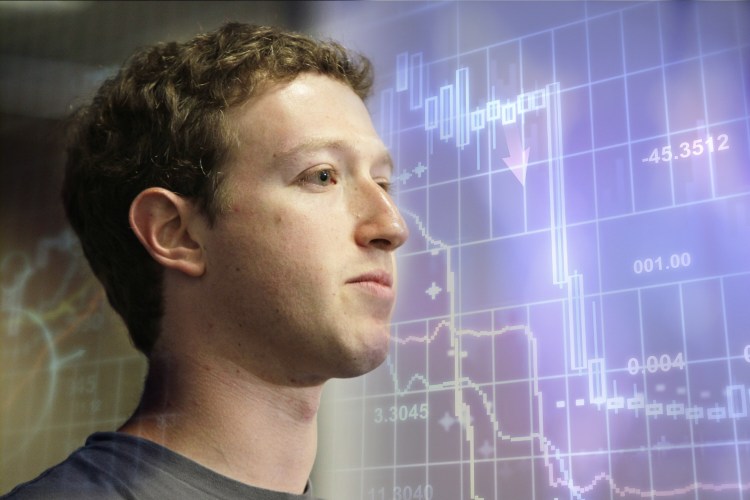
Facebook just launched Gifts, a new service that will let users spend real money to send real products to their real friends — and yes, Facebook is taking a cut of each gift’s price.
More than ever before, the company is going to be able to prove to investors that it has the power to move physical product: boxes on shelves. This isn’t ephemeral stuff, like online advertising or virtual Credits for virtual livestock. Facebook Gifts are as real as it gets, and reality is what the stock market is looking for from the Internet’s biggest success (and most disappointing IPO) in a decade.
What’s more, it makes Facebook a potential challenger to the likes of Amazon and newcomer/force of nature Fab.com.
In a chat with Lee Linden, the mind behind the new service, we got into the details behind the feel-good feature. Linden originally launched the service in February as Karma, a standalone app with the exact same products and features as Facebook Gifts. Facebook acquired Karma just a few months after that launch. While Karma originally combed Facebook for data on birthdays and big life events worthy of a good gift, Facebook Gifts plugged the app into some of the most basic parts of its user interface: the News Feed and your friends’ walls.
“Sharing these types of sentiments is just a core part of the experience, saying ‘thank you, congratulations,'” said Linden. “The company feels like it’s a natural extension of that. … It shouldn’t be so hard to send a gift to someone, and in a few years, this should be the way to send things to people.
“Also, gifting is a very unique form of e-commerce, and we thought there was a lot more innovation that could be going on there.”
What Facebook Gifts brings to the experience is unique. Now, you don’t have to know a friend’s mailing address to send a gift. Heck, you don’t even have to have your credit card handy. You can make a commitment and start a purchase anytime.
Altogether, it’s exactly the kind of seamless, speedbump-free transaction that drastically increases conversions and purchases totals.
Also, we’ve already seen what inclusion in the Facebook Timeline can do for app adoption. Websites and mobile apps that built Open Graph integrations for the Facebook Timeline saw huge boosts in new-user signups, user activity, and other metrics.
One can only imagine how gift-giving will spread among friends, especially with Facebook-built gifting buttons and gift recommendations scattered strategically around the site.
We asked Linden if vendor partners were prepared for a potentially huge influx of new orders. “It’s a very small subset [of Gifts pilot users] to begin with, and they can limit the number of orders they get every day … and we do real-time inventory.” Facebook is also using the Gifts pilot period as a change to screen and select new vendors, who can apply online.
Still, the small size of the initial user group won’t stay small for long. Every Facebook user who receives a gift gets automatically added to the program. For example, I got on the “white list” for Gifts, making the feature available to me. Then I sent my first gift to my friend Dena. So now, Dena’s on the whitelist, too. If Dena then sends her mom a gift, then Mom also becomes a Gifts user. The viral mechanics are built into the program, and the size of the trial will likely balloon over the next few days and weeks until a general U.S. rollout including hundreds of millions of users and countless individual gifts.
But that’s just in the U.S.; Facebook is also thinking about a global launch. “That’s a huge challenge,” said Linden, referencing the need to hand-curate gifts for a truly universal range of income levels, languages, regional proclivities, and demographics.
“We’re starting with the US, and we’ll evaluate in the future what makes sense. Facebook is a global company … We have employees in many countries, and we already modify our services for other countries based on their needs and tastes.”
There’s a lot we don’t know about the business side of this yet. For gifts around the U.S. and perhaps someday around the world, Facebook is taking on significant overhead. In addition to selecting, photographing, and writing copy for each gift item that makes it into the program, the social network is also assuming all customer service duties for purchases made through the service. Facebook is processing payments, handling orders, and tracking inventory.
Also, Linden couldn’t reveal just how much of a percentage Facebook is taking of each gift’s total cost, but we’re sure it covers that overhead and then some. And we don’t know if, like daily deals systems, Facebook Gifts will be less than ideal in the long term for its merchants.
What we do know is that the revenue opportunities are huge. Let’s do some conservative, hypothetical math. If 50 million Facebook users (that’s one-third of U.S. Facebook users) each buy a $20 gift for a family member or friend five times a year, that adds up to $5 billion in gift purchases. Five percent of $5 billion is $250 million. So hypothetically and rather conservatively, Facebook could be getting an extra quarter of a billion dollars in revenue each year with Gifts.
Currently, analysts predict 2012 revenues for Facebook roughly between $4 billion and $5 billion. So in those terms, $250 million is a not insignificant chunk of change — and it’s related to brick-and-mortar products, a fact that old-school investors are sure to appreciate, especially as the winter gift-giving holidays roll around.
Not bad for an entirely new revenue stream that came out of the acquisition of a three-month-old mobile app.
VentureBeat's mission is to be a digital town square for technical decision-makers to gain knowledge about transformative enterprise technology and transact. Learn More


